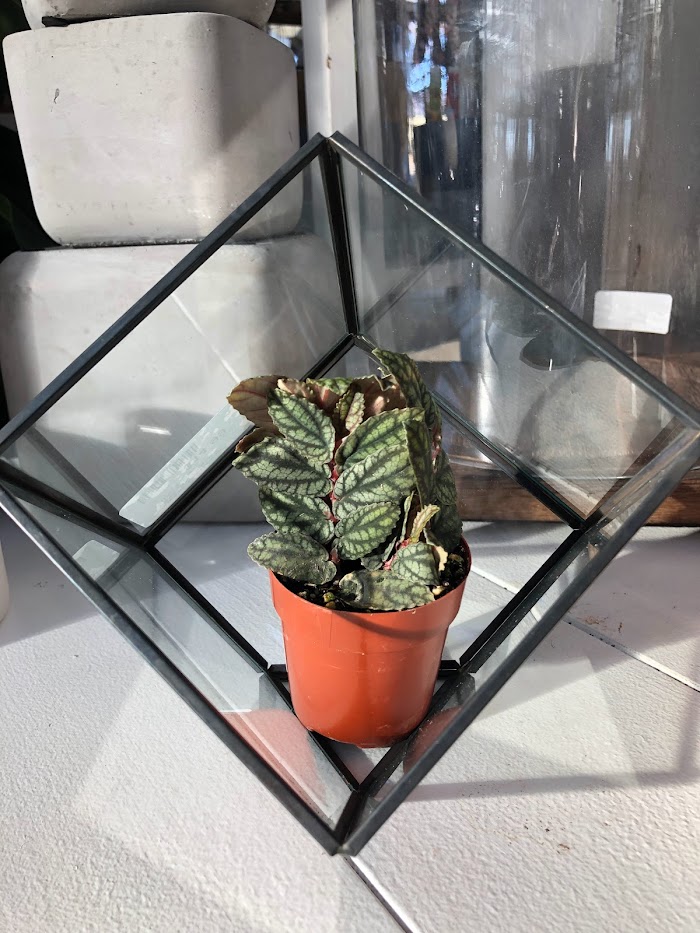A bit of a hidden gem in the houseplant world, the trailing Pellionia pulchra (better known as watermelon vine) has oval-shaped variegated leaves with dark stems. One of the best ways to enjoy this beauty is to put it in a hanging basket or a high shelf to show off its cascading vines.
This lush plant can be a little finicky, so it’s a good idea to be attentive about its light, water and feeding.

Light: The watermelon vine likes plenty of bright, indirect light, which will help it grow. Can it survive lower light levels? Yes, but more light ensures that this plant will thrive instead of just survive.
Water: This is a plant that originated in southeast Asia, so it’s used to having moist soil. You’ll want to water when the top inch of its soil dries out. Don’t let it go completely dry!
When you water, saturate the soil until it runs through the pot’s drainage holes. Remove any excess water from the drainage plate. This plant likes moisture, but not sitting in water.
Temperature and Humidity – The sweet spot for this plant, temperature wise, is in the mid-70s. Keep them away from drafts that would come from exterior doors or cooling/heating vents. They also love their humidity, so a humidifier or pebble tray with water is highly recommended.
Here’s another tip for humidity loving plants – group them with other plants. It will boost the “collective humidity” and benefit all the plants.
Feeding Time – Your watermelon vine prefers diluted fertilizer every other week during growing season in the spring and summer. You don’t need to feed in the fall and winter when the plant is dormant.